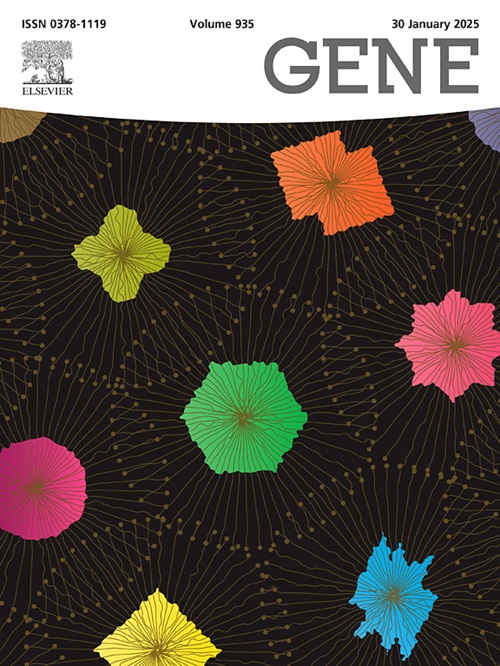U87MG细胞系CD133+VE细胞耐药及干细胞性相关表观遗传调控因子的体外研究
IF 2.6
3区 生物学
Q2 GENETICS & HEREDITY
引用次数: 0
摘要
胶质母细胞瘤(GBM)是成人原发性脑肿瘤中最常见的恶性肿瘤,易复发且对治疗有抵抗性。神经胶质瘤干细胞,一种罕见的细胞群,被认为是治疗失败的原因。研究胶质瘤的发病机制和确定胶质瘤干细胞对治疗复发和对现有化疗药物的耐药性的生物标志物是必要的。从U87MG细胞株中分离得到CD133+VE细胞,并对其形态特征、细胞活力、自我更新效率、迁移潜力和核型进行了表征。采用阿霉素、顺铂、伊立替康、依托泊苷和替莫唑胺测定其对CD133+VE细胞的抗增殖作用。用共聚焦显微复制技术定位CD133+VE细胞内的化疗药物。为了寻找表观遗传生物标志物,我们进行了RNA测序,以发现lncrna在干细胞和治疗耐药性中的作用。所有实验均以u87细胞系和CD133-VE细胞为对照。研究发现,CD133+细胞具有高增殖能力,迁移潜力增加,对化疗药物的IC50值升高,并表现出与多能性相关的独特核型。化疗药物如阿霉素定位于细胞核外,共聚焦显微镜显示耐药。RNA测序结果显示,CD133+细胞中存在126个差异表达lncRNA (DELs),其中lncRNA LOXL1-AS1高度上调,lncRNA PAX8-AS1显著下调。据报道,这些lncrna与耐药、迁移和上皮-间质传递(EMT)、自我更新和导致预后不良和疾病复发的干细胞特性有关。本文章由计算机程序翻译,如有差异,请以英文原文为准。
In vitro investigation of epigenetic regulators related to chemo-resistance and stemness of CD133+VE cells sorted from U87MG cell line
Glioblastoma (GBM) is the most common and malignant adult primary brain tumor with frequent relapse and resistance to therapies. Glioma stem cells, a rare population, is thought to be the reason behind the treatment’s failure. It is imperative to investigate the disease mechanisms and identify the biomarkers by which glioma stem cells would contribute to treatment relapse and resistance to already available chemotherapeutic agents.
The CD133+VE cells were isolated from U87MG cell line and characterized by morphological features, cell viability, self-renewal efficiency, migration potential and karyotyping. Doxorubicin Cisplatin, Irinotecan, Etoposide and Temozolomide were used to determine the anti-proliferative effect on CD133+VE cells. Confocal microcopy was used to localize the chemotherapeutic agents in the CD133+VE cells. In quest of epigenetic biomarkers, RNA sequencing was performed to find the role of lncRNAs in stemness and resistance to therapies. U87cell line and CD133-VE cells were kept as controls for all the experiments.
It was found that CD133+VEcells were highly proliferative with increased migration potential, elevated IC50 values against chemotherapeutic agents and showed distinct karyotyping related to pluripotency. Chemotherapeutic agent such as Doxorubicin was localized outside the nucleus revealing the drug resistance as evident by confocal microscopy. RNA sequencing revealed 126 differentially expressed lncRNAs (DELs) in CD133+VEcells among which lncRNA LOXL1-AS1 was highly upregulated and lncRNA PAX8-AS1 was significantly downregulated. These lncRNAs has been reported to be related to drug resistance, migration and epithelial- to- mesenchymal transmission (EMT), self-renewal and stemness properties contributing to poor prognosis and disease relapse.
求助全文
通过发布文献求助,成功后即可免费获取论文全文。
去求助
来源期刊

Gene
生物-遗传学
CiteScore
6.10
自引率
2.90%
发文量
718
审稿时长
42 days
期刊介绍:
Gene publishes papers that focus on the regulation, expression, function and evolution of genes in all biological contexts, including all prokaryotic and eukaryotic organisms, as well as viruses.
 求助内容:
求助内容: 应助结果提醒方式:
应助结果提醒方式:


